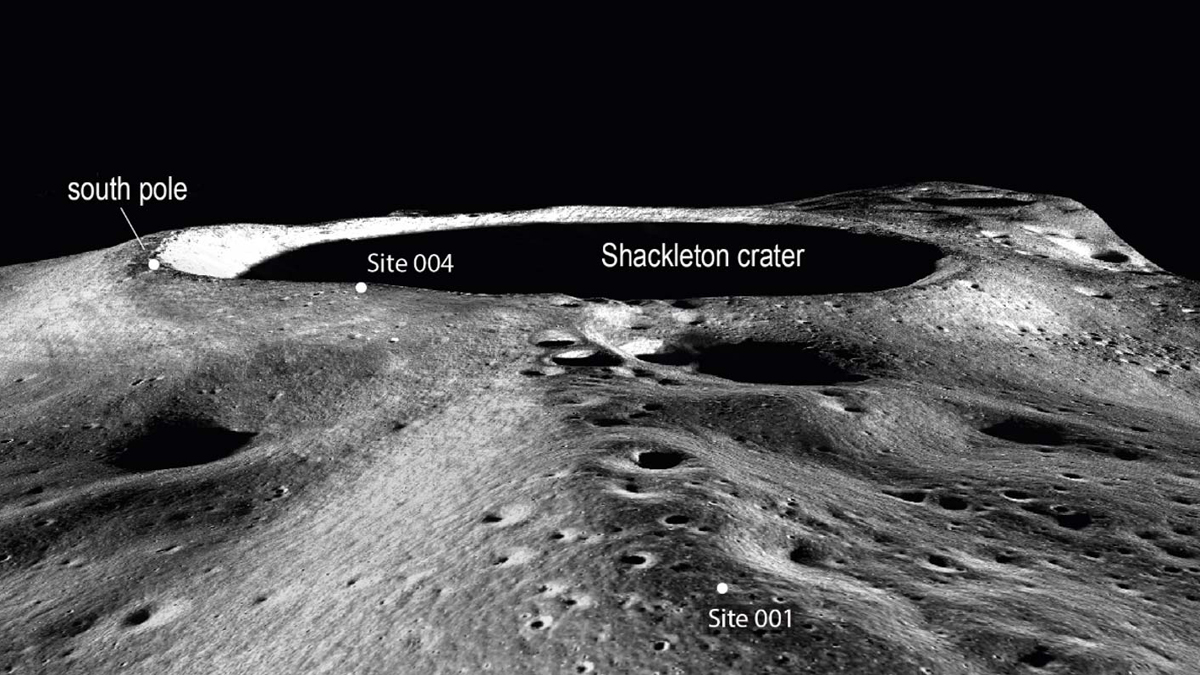New technique may bring moon's shadowy polar craters into the light

A new technique relying on deep learning could allow scientists to peek inside the moon's permanently shadowed polar craters for the first time.
The moon's south pole is of great interest, as NASA plans to land the Artemis 3 mission there in the mid-2020s and hopes to establish a research base in the area over the following years. .
The new imaging technique developed by a team of researchers led by NASA could enable scientists to see inside those craters before the humans get there.
The technique detects photons that were reflected into those shadowed regions by the surrounding mountains and crater walls in images captured by the Narrow Angle Camera instrument on NASA's Lunar Reconnaissance Orbiter. The new processing work produces "high-signal and high-resolution images" that will help future moon explorers do their work more efficiently, the researchers said in a new study announcing the results.
Related: NASA's Artemis 1 moon mission: Live updates
"Visible routes into the permanently shadowed regions can now be designed, greatly reducing risks to Artemis astronauts and robotic explorers," study co-author David Kring, the principal investigator of the Center for Lunar Science and Exploration, which is jointly run by NASA's Johnson Space Center and the Lunar and Planetary Institute, said in a statement.
During the early missions of NASA's Artemis program, astronauts will only be able to spend a couple of hours in those dark regions. The images obtained with the new technique could help mission planners guide the explorers to particularly interesting features and help them locate the most promising samples.
Get the Space.com Newsletter
Breaking space news, the latest updates on rocket launches, skywatching events and more!
The floors of the moon's polar craters are permanently dark as the sun never passes overhead but always moves in a circle around the horizon. The shadowy landscapes around the poles are therefore freezing cold, with temperatures dropping below minus 280 degrees Fahrenheit (minus 170 degrees Celsius). The scientists said that such low temperatures are crucial for water and other substances to remain locked in lunar soils and not evaporate into the vacuum of space.
Lunar water is an interesting resource as it could be used to make fuel for future exploration and provide life support for astronauts. But it could also hold clues about water transfer between the moon and Earth, the scientists said.
"There is no evidence of pure surface ice within the shadowed areas, implying that any ice must be mixed with lunar soil or underneath the surface." Valentin Bickel, a former graduate student intern at the Lunar and Planetary Institute, and lead author of the new study, said in the statement.
The study, which examined a decade-worth of images from the lunar south pole, was published in the journal Geophysical Research Letters on Friday (Aug. 26).
Follow Tereza Pultarova on Twitter @TerezaPultarova. Follow us on Twitter @Spacedotcom and on Facebook.
Join our Space Forums to keep talking space on the latest missions, night sky and more! And if you have a news tip, correction or comment, let us know at: community@space.com.

Tereza is a London-based science and technology journalist, aspiring fiction writer and amateur gymnast. Originally from Prague, the Czech Republic, she spent the first seven years of her career working as a reporter, script-writer and presenter for various TV programmes of the Czech Public Service Television. She later took a career break to pursue further education and added a Master's in Science from the International Space University, France, to her Bachelor's in Journalism and Master's in Cultural Anthropology from Prague's Charles University. She worked as a reporter at the Engineering and Technology magazine, freelanced for a range of publications including Live Science, Space.com, Professional Engineering, Via Satellite and Space News and served as a maternity cover science editor at the European Space Agency.









